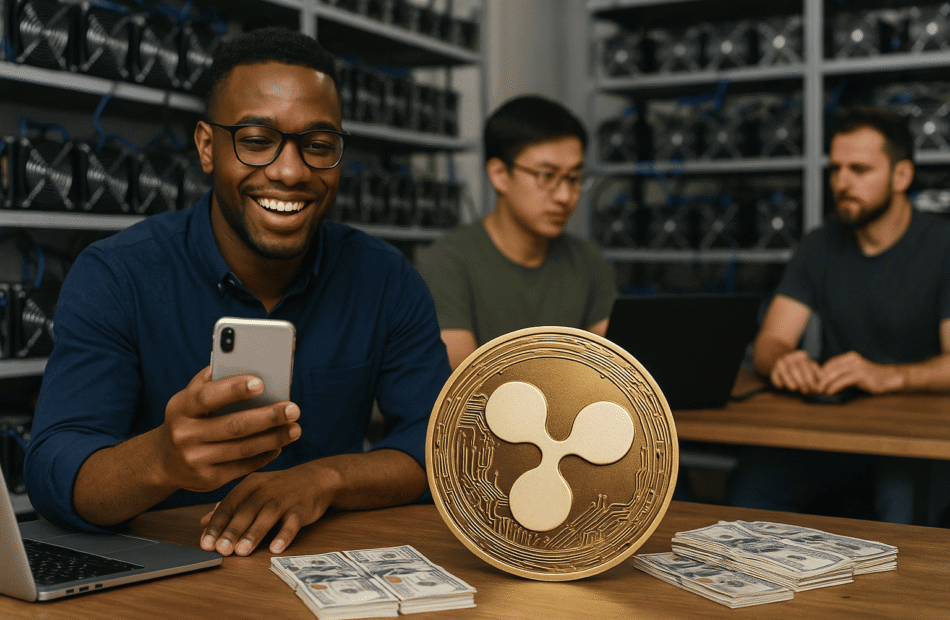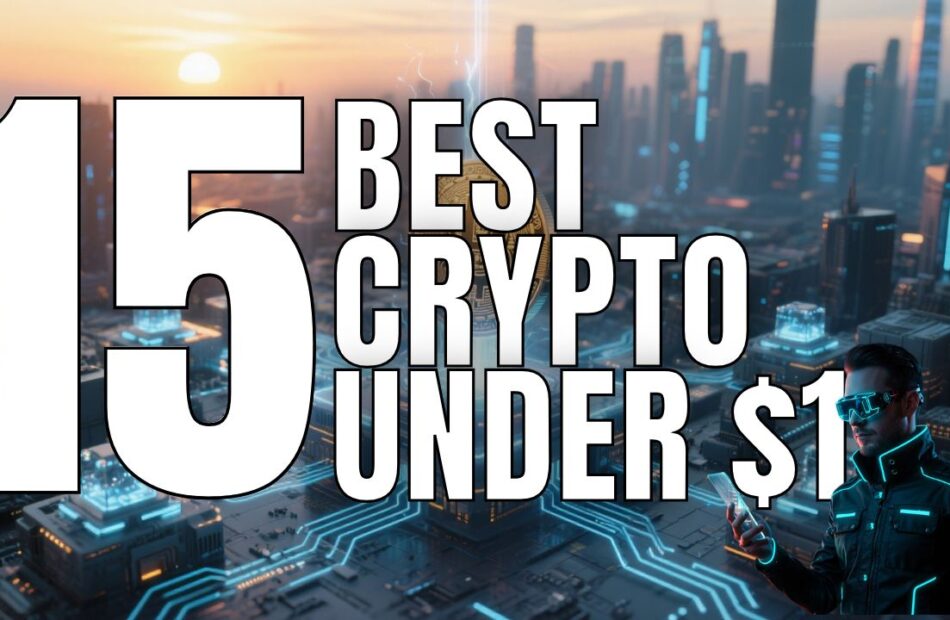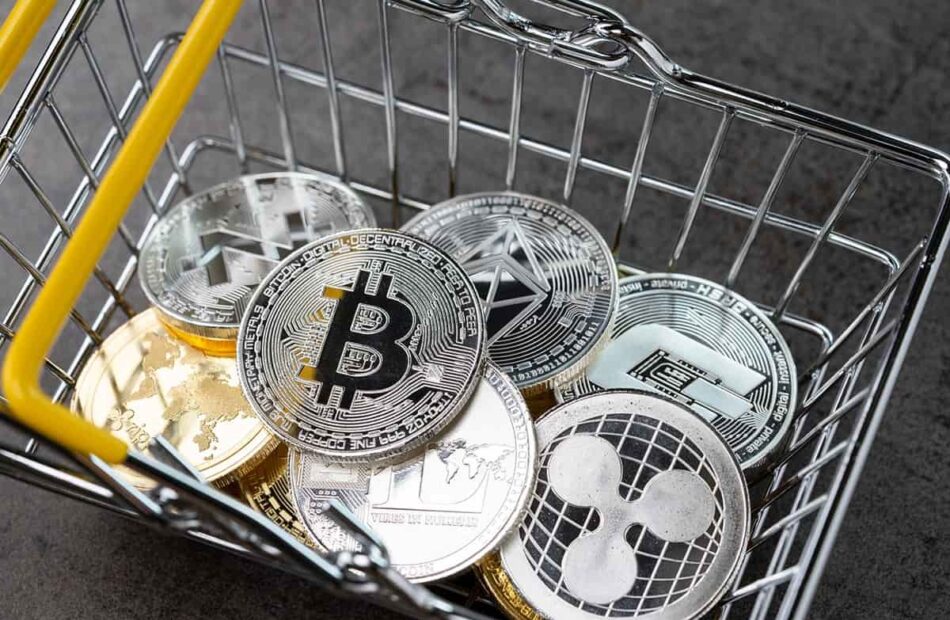Ripple Scores Win; Earn Passive Crypto with GMO Miner
Ripple has just scored a major win. The U.S. Securities and Exchange Commission (SEC) gave Ripple Labs a rare approval, allowing the company to raise private investment funds more freely. This news helped XRP jump to $3.29, rising over 4% today and 11% this week. So far this year, XRP is up a massive 481%, outperforming both Bitcoin and Ethereum.
This approval came after the SEC dropped an old restriction that had stopped Ripple from using a popular fundraising method called Regulation D. That restriction was tied to a legal case from 2023, but now it’s been lifted as part of a broader settlement. While Ripple still has some legal baggage, this move lets them sell XRP directly to accredited investors, boosting the coin’s liquidity and opening doors for new growth.
As XRP rises, many investors are looking for ways to earn steady income from it. That’s where GMO Miner comes in. It’s a UK-based cloud mining platform that turns popular cryptocurrencies like XRP, Bitcoin (BTC), Ethereum (ETH), and Tether (USDT) into daily profits. You don’t need mining equipment or technical knowledge — everything runs on smart AI and renewable energy.
GMO Miner runs over 100 mining farms worldwide, all powered by green energy. This means your crypto earnings are not only profitable but also environmentally friendly.
Here’s how to get started with GMO Miner:
1. Go to the GMO Miner website and sign up — you’ll get a $15 bonus right away.
2. Connect your digital wallet securely.
3. Pick a mining contract that fits your budget and preferred term.
4. Start mining — your earnings are paid daily.
5. Share with friends — earn referral rewards up to $21,000 through their affiliate program (earn 3% + 1.5% commissions).
Here are some of the current mining contract options:
**Beginner Plan**
– Investment: $100
– Duration: 2 days
– Daily Earnings: $3.50
– Total Return: $107
**Antminer AL1**
– Investment: $1,100
– Duration: 12 days
– Daily Earnings: $14.41
– Total Return: $1,272.92
**Antminer S21+**
– Investment: $5,000
– Duration: 35 days
– Daily Earnings: $76
– Total Return: $7,660
**Antminer S21 XR Imm**
– Investment: $8,000
– Duration: 30 days
– Daily Earnings: $129.60
– Total Return: $11,888
**Antminer Rack**
– Investment: $12,000
– Duration: 40 days
– Daily Earnings: $201.60
– Total Return: $20,064
**Ant Space HK3 V6**
– Investment: $30,000
– Duration: 45 days
– Daily Earnings: $534
– Total Return: $54,030
You can view more contract options directly on the GMO Miner platform.
Once you buy a contract, your returns are guaranteed and added to your account every 24 hours. After the contract ends, your original investment is returned. You can withdraw your money or reinvest it anytime for compounding growth.
GMO Miner is designed to make crypto income simple and stable. They believe crypto shouldn’t just be about risky price swings — it should also offer consistent profits. That’s why their platform focuses on safety, transparency, and sustainability.
All energy used by GMO Miner’s farms comes from clean, renewable sources. So while you’re earning money from XRP or other cryptos, you’re also helping reduce carbon emissions.
With growing regulatory support and a push for green technology, GMO Miner gives both new and experienced investors a smart way to grow their crypto income. If you’re ready to earn from XRP’s momentum without the complexity of mining equipment or trading risks, GMO Miner offers a simple solution.
Start earning passive income today by visiting GMO Miner’s official website and joining the green crypto mining movement.
Layer Brett Presale Surges as Altcoin Season Heats Up
Bitcoin has recently smashed through the $124,000 mark, and that has reignited excitement across the crypto market. While many eyes are still on big names like Ethereum and Solana, a fresh player called Layer Brett (LBRETT) is making serious waves. Investors are now looking beyond the usual suspects to catch early gains in promising altcoins. One standout? Layer Brett—a new Layer 2 meme project that combines real utility with viral appeal.
In just a few days, Layer Brett raised $350,000 during its presale. Its price jumped from $0.004 to $0.0042, and many seasoned investors believe it’s the next big token in this altcoin cycle. But what’s really driving this momentum?
Solana continues to show strength even during shaky market conditions. After a dip to $192.43, SOL quickly bounced back to $198.01—even after inflation data came in worse than expected. The Producer Price Index (PPI) showed inflation at 3.3%, higher than the predicted 2.5%. Still, Solana kept climbing, which shows strong investor confidence.
From a technical perspective, Solana’s price chart looks bullish. It recently broke out of an inverse head and shoulders pattern—often a signal for future gains. Plus, it’s staying within an upward trend channel that supports higher prices. On-chain data shows SOL is now leading Ethereum in 24-hour trading volume for perpetual futures. If Solana breaks above the $218.73 resistance with strong volume, a 50% price rally could be on the horizon.
Ethereum, the king of DeFi, is also having a strong month. In just 30 days, ETH gained 43%, reaching $4,770—only 2.5% away from its all-time high in 2021. This rally supports predictions from analysts like Fundstrat, who say Ethereum could be the biggest investment opportunity over the next decade, especially as AI and blockchain tech come together.
Even big banks like Standard Chartered have increased their targets for ETH, now expecting it to hit $25,000 by 2028. Ethereum already dominates 55% of the $25 billion tokenized real-world asset market and leads in stablecoin activity. However, that kind of growth will require huge institutional investment—and that could take years.
That’s why many smart investors are shifting their focus to earlier-stage projects like Layer Brett. This isn’t just another meme coin riding the hype wave. LBRETT introduces a whole new way for meme coins to function—by adding real utility and scalable technology.
Layer Brett is built on Layer 2 infrastructure, which makes it faster and cheaper than older networks. But more importantly, it opens the door for new types of applications that traditional meme coins just can’t support. Its ecosystem includes advanced staking options, game-like features, NFT integration, and community voting tools that keep users engaged even during down markets.
This mix of fun and function has caught mainstream attention fast. With its growing community and rising presale price, many see Layer Brett as a unique project that merges viral culture with actual use cases.
Altcoin season is clearly heating up, and investors are rotating out of more mature assets like Solana and Ethereum into high-growth opportunities like Layer Brett. At just $0.0042, there’s still time to get in early before the next price jump.
The presale won’t last forever, and with each tier the price goes higher—so early buyers are getting the best deal. Some analysts even believe LBRETT could reach $1 post-launch if momentum continues.
Crypto is always evolving, and Layer Brett might just be the breakout star of this altcoin cycle. But as always, make sure to do your own research before jumping in.
Top Altcoins to Watch as Bitcoin Rally Cools Down
Bitcoin has been on a massive run, breaking records and reaching new highs. But now, it’s starting to slow down. Prices are still near their peak, but the fast-paced gains have cooled off. In the crypto world, this usually signals a shift—investors begin looking for the next big opportunity in smaller, high-potential coins known as altcoins.
Experienced traders know this pattern well. When Bitcoin takes a breather, altcoins often step into the spotlight. That’s why lists like “Best Altcoins to Buy Now” are gaining more attention. The goal? Find hidden gems before the crowd arrives and prices skyrocket.
We’ve seen this cycle before: Bitcoin surges first, then its dominance fades as money flows into other promising projects. These are often coins that haven’t already exploded in price but have strong fundamentals and potential for growth.
Right now, Ethereum is getting a boost thanks to ETF investments. Solana is gaining traction with increased adoption. Meanwhile, niche sectors like AI tokens, DeFi projects, and cross-chain solutions are seeing quiet but strong growth. This rotation from large caps to altcoins has begun—and getting in early can lead to serious gains.
One project getting a lot of buzz is MAGACOIN FINANCE. It’s showing up on top altcoin watchlists for good reason. The project has a compelling story, it’s still early in its growth phase, and it has a dedicated community driving it forward. This isn’t just another meme coin riding on hype—MAGACOIN FINANCE is building real utility for the next wave of crypto adoption.
What makes this even more exciting? The timing. Money is moving out of Bitcoin and into newer, more rewarding plays—exactly where MAGACOIN FINANCE fits in. Early investors who spot these shifts often see the biggest returns: find a strong project, buy early, and ride the momentum.
Let’s face it—Bitcoin is a massive asset now. A 20% jump is huge for BTC, but with altcoins, especially smaller ones with solid growth potential, you could see 2x or 3x returns in just a few weeks if market conditions are right.
And those conditions are forming fast. Crypto ETFs are bringing in institutional investors. Strategic partnerships are being announced across the space. And on-chain data shows growing interest and accumulation in mid-cap and emerging tokens.
If you want to take advantage of this moment, focus on three things: spot coins with strong narratives, get in early before the hype, and follow the smart money.
MAGACOIN FINANCE checks all those boxes. It has market momentum, upcoming catalysts that could drive demand, and it’s still flying under the radar—giving investors a chance to get in before it goes mainstream.
Bitcoin slowing down doesn’t mean the party’s over—it means it’s just beginning for altcoins. The rotation has started. Smart investors are already making their moves, and the altcoins leading this trend could define the rest of the year in crypto.
Top 15 High-Potential Crypto Tokens Under $1 in 2025
In 2025, the crypto world is growing fast, and people are starting to look beyond just price. One of the most common questions is: what makes a cryptocurrency under $1 valuable?
It’s not just about being cheap. It’s about what the project does, how it helps the blockchain world, and whether it’s built to last. Many tokens under $1 are key parts of major ecosystems. They support important features like smart contracts, identity verification, staking, cross-chain connections, and more.
Let’s break it down simply: Just because a coin is under $1 doesn’t mean it’s weak. Some of these low-cost tokens are doing big things behind the scenes. They power real applications in areas like DeFi, AI, gaming, identity systems, data sharing, and even metaverse platforms.
Take EarthMeta (EMT) for example. EMT is building a blockchain version of the Earth, where cities become NFTs. You can own a city, earn rewards, and trade digital landmarks. Its AI-powered metaverse isn’t about hype – it’s about function. EMT is proving that strong infrastructure can exist at a low price.
When picking the best crypto under $1, look at what the token supports – not just its chart. Does it help with speed? Security? Governance? Real-world use? These are the questions that matter now.
Let’s explore some standout crypto tokens under $1 that are shaping the future of Web3:
**1. EarthMeta (EMT)**
– What it does: Turns real-world cities into tradable NFTs
– Why it matters: Combines blockchain with metaverse and AI features
– Standout feature: Earn passive income through city and country royalties
– Use case: Digital ownership, governance, scalable virtual architecture
**2. Cardano (ADA)**
– What it does: Secure smart contract platform with peer-reviewed upgrades
– Why it matters: Energy-efficient proof-of-stake system
– Standout feature: Supports dApps and NFTs
– Use case: Long-term decentralized apps with sustainable growth
**3. Tezos (XTZ)**
– What it does: Self-upgrading blockchain with on-chain governance
– Why it matters: Formal verification ensures secure smart contracts
– Standout feature: Liquid proof-of-stake (LPoS)
– Use case: Reliable systems for finance, voting, and development
**4. Aerodrome Finance (AERO)**
– What it does: Provides liquidity on Base network
– Why it matters: Vote-lock governance for community power
– Standout feature: Dynamic rewards for liquidity providers
– Use case: Core DeFi infrastructure with user-first model
**5. Lido DAO (LDO)**
– What it does: Makes ETH staking easy and liquid
– Why it matters: Earn rewards while still using your ETH
– Standout feature: stETH token reflects staked ETH
– Use case: Staking made accessible for everyone
**6. Theta Network (THETA)**
– What it does: Decentralized video and AI content delivery
– Why it matters: Lower costs for creators and viewers
– Standout feature: Dual-layer network for streaming and computing
– Use case: Media and entertainment powered by blockchain
**7. Stacks (STX)**
– What it does: Adds smart contracts to Bitcoin
– Why it matters: Secure apps that settle on Bitcoin’s network
– Standout feature: PoX consensus and Clarity language
– Use case: DeFi and NFTs built directly on Bitcoin
**8. Mantle (MNT)**
– What it does: Modular Layer-2 built on Ethereum
– Why it matters: Combines speed with Ethereum security
– Standout feature: Liquid staking (mETH) and product suite
– Use case: DeFi, savings, and trading in one ecosystem
**9. Ondo (ONDO)**
– What it does: Brings real-world assets like U.S. Treasuries to DeFi
– Why it matters: Regulated, transparent tokenized finance
– Standout feature: Flux Finance and USDY yield-bearing token
– Use case: On-chain access to institutional-grade assets
**10. Ocean Protocol (OCEAN)**
– What it does: Lets users sell or share their data safely
– Why it matters: Keeps control in the hands of data owners
– Standout feature: Tokenized datasets with privacy protection
– Use case: Decentralized data marketplaces
**11. Celo (CELO)**
– What it does: Mobile-first blockchain for financial access
– Why it matters: Designed for emerging markets and low-end phones
– Standout feature: Phone-number wallets and stable assets like cUSD
– Use case: DeFi for the unbanked, carbon-negative focus
**12. Litentry (LIT)**
– What it does: Builds decentralized digital identity tools
– Why it matters: Cross-chain privacy-preserving ID management
– Standout feature: Trusted Execution Environments (TEE) + verifiable credentials
– Use case: Identity for Web3 apps, voting systems, user reputation
**13. Aleph Cloud (ALEPH)**
– What it does: Decentralized alternative to AWS or Firebase
– Why it matters: No centralized servers – full Web3 infrastructure
– Standout feature: Interoperable storage and compute across blockchains
– Use case: Cloud services for dApps, DeFi, AI
**14. Reef (REEF)**
– What it does: Easy-to-use Layer 1 blockchain for new users
– Why it matters: Built-in wallets, swaps, and tools make crypto simple
– Standout feature: Fast, low-fee transactions with EVM compatibility
– Use case: Easy onboarding into Web3
**15. Stellar (XLM)**
– What it does: Cross-border payments and asset transfers
– Why it matters: Cheap and fast global money movement
– Standout feature: Multi-currency support and built-in DEX
– Use case: Remittances, banking the unbanked, fast payments
So why are these cryptos under $1 worth watching?
Because they’re not just tokens — they’re building blocks of future systems. They help run apps, manage identity, move money globally, store data securely, and create virtual economies.
Many are priced low due to large token supplies or early-stage development – not because they lack value. These projects are designed for scale, accessibility, and real-world use.
Take EarthMeta again – its sub-$1 price isn’t about being undervalued. It’s about giving everyone access to powerful digital infrastructure without needing big capital. EMT supports NFTs based on real-world geography, includes a royalty system for city owners, and offers a layered metaverse with functional purpose.
This is why cheap crypto doesn’t mean weak crypto. In fact, many of these sub-$1 coins are helping lay the foundation for what’s next in Web3.
These tokens may be inexpensive now, but they offer high potential through strong technology, committed communities, and clear use cases.
If you’re looking at crypto as more than just trading — if you want to explore real innovation — keep an eye on these affordable tokens that are quietly building the future.
Smart Crypto Investing: What to Know Before You Start
**Crypto Investing: What You Need to Know Before You Jump In**
We’ve been holding onto some Bitcoin for a while now, but we don’t talk about it much. Why? Because crypto is risky. Like, lose-your-money-in-a-heartbeat risky. Until recently, it felt more like gambling than investing. But something is changing—big institutions and regulators are starting to take crypto seriously. And when they start paying attention, we do too.
—
### Crypto: Is It Really an Asset Class?
Let’s be clear—calling crypto an “asset class” is still a stretch. Most traditional assets (like stocks or real estate) have well-known ways to figure out what they’re worth. Crypto? Not so much. It’s mostly based on hype and speculation. People say things like, “You just don’t get how smart this tech is,” or “This time it’s different.” Spoiler: It’s never different.
Experienced investors always begin by asking: is this even something worth investing in at all? Most retail investors underperform the market—badly. In 2023, the average investor lagged behind the S&P 500 by 5.5%. And that’s during a bull market! Now imagine betting on something like crypto, where half of all tokens ever created have completely failed.
—
### What Crypto Should You Own?
If you’re going to invest in crypto, start with the biggest names. Right now, the total value of all cryptocurrencies is about $4 trillion. That’s small compared to the $54 trillion market cap of the S&P 500. Over half of that $4 trillion belongs to Bitcoin. Add in Ethereum and a few others, and you’ve covered most of the market.
But be careful—some big names come with big red flags. Take Tether, for example. It’s a “stablecoin” that’s supposed to be backed by U.S. dollars. But they’ve been fined before for not having enough money in reserve, and they still haven’t been properly audited for the $165 billion they claim to have. Until they get audited, Tether is too risky.
If you want to invest broadly in crypto without touching Tether, consider the Grayscale Digital Large Cap Fund (GDLC). It includes Bitcoin and Ethereum but skips Tether. It’s a good starting point for getting exposure without going all-in on risky assets.
—
### Where Should You Keep Your Crypto?
For most people, using a crypto ETF (Exchange-Traded Fund) is the safest choice. These are managed by big firms that are regulated and audited. If something goes wrong, you’re more likely to be protected.
If you decide to hold crypto yourself, use a trusted, publicly traded platform like Coinbase. They’re audited and used by institutions, which is a good sign. They also store 98% of their customers’ crypto in cold storage (offline), which adds an extra layer of security.
Cold storage can be a good option if you really know what you’re doing—but it also brings more complexity. If you’re not comfortable with that, just make sure your account has strong passwords, two-factor authentication (2FA), and avoid clicking suspicious links.
Most importantly: never tell anyone what crypto you own or where you keep it.
—
### How Much Crypto Should You Own?
This depends on your overall financial picture. If you’re just throwing your tax return into Dogecoin because of FOMO, you’re probably going to learn some hard lessons fast.
A better approach is to look at your total net worth and break it down by asset type—stocks, bonds, real estate, etc. Then decide how much should go into “alternative assets” like crypto.
A general rule: keep alternatives at 10% or less of your total portfolio. That’s our strategy. We split that 10% across wine, gold, art, and Bitcoin evenly.
Pick alternatives that match your interests and lifestyle. If you love wine or art, those can be fun to invest in. Gold is a classic diversifier. Bitcoin? Maybe—but don’t let it be your entire alternatives allocation unless you really believe in it and understand the risks.
—
### Will We Buy More Crypto?
Maybe—but not when prices are peaking and hype is high. We’ll wait for more research from institutions about how much crypto people should own in a balanced portfolio.
Crypto is still very new. We don’t have decades of data like we do with stocks or bonds. That makes it hard to say how crypto fits into long-term investment strategies.
—
### What About Crypto Stocks?
Some people get crypto exposure by buying stocks of companies involved in the space—like MicroStrategy or Circle (which recently went public). Be cautious here—some of these companies have questionable track records or shaky business models.
One company we do like is Coinbase (COIN). It’s publicly traded, used by institutions, and has strong security practices. It’s a good way to bet on the growth of institutional crypto adoption without buying crypto directly.
—
### Final Thoughts
People tend to either love or hate crypto. Some think it’s worthless junk; others think Bitcoin will hit millions per coin someday. The truth is probably somewhere in between.
Institutions are slowly getting involved, and that’s a good sign for long-term investors looking for stability and legitimacy in the space.
Until then, stick with smart investing habits:
– Think about crypto as part of your overall asset mix.
– Use regulated platforms or ETFs.
– Don’t chase hype.
– Set clear limits on how much you invest.
– Keep your security tight.
Crypto might be part of the future—but only if it grows up first.





